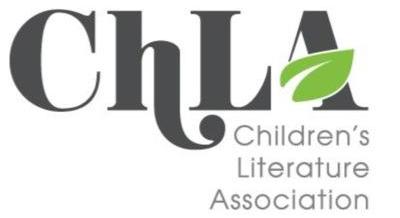- About ChLA
- Committees
- Accessibility Committee
- Anne Devereaux Jordan Committee
- Article Award Committee
- Astrid Lindgren Award Committee
- Book Award Committee
- Communications Committee
- Conference Advisory Committee
- Diversity Committee
- Edited Book Award Committee
- Ethics Committee
- Finance and Development Committee
- Grants Committee
- Global Committee
- Judith Plotz Emerging Scholar Award Committee
- Membership Committee
- Ombuds Committee
- Phoenix Award Committee
- Phoenix Picture Book Award Committee
- Members
- Events
- Awards & Grants
- Publications
- Opportunities & Resources
Why Study Children's Literature?Introduction Many strong reasons for studying children’s literature are shaped by the objectives, values, beliefs, and salable skills of the discipline in which the coursework is seated, but all courses across the wide educational spectrum share elements that invite us to the study of children’s literature. Once we choose to accept the invitation, reward us generously for the cleverness of our choice. First and foremost, a study of children’s literature brings into focus personal taste and beauty. This is true for any course in literature and no less true for children’s literature. Entangled with the question of taste is one of cultural privileging. A study of children’s literature introduces students to a body of aesthetically challenging works that frequently go missing from other literature courses and from what is generally characterized as the canon. History This dissident aspect of the academic field of children’s literature references its origin. Books and texts for children attracted scholarly attention at a transitional moment in education, during a time of strenuous academic debate about the value of hierarchies, such as the literary canon. The field of children’s literature retains in varying degrees some measure of the revolutionary spirit of those teachers who pointed out the inseparability of universal standards and systems of canonization from ideological and historical bias. Through engagement with literary works of outstanding merit that tend to be marginalized by the traditional academic model or in traditionally based curricula, students are introduced to competing narratives of literary history and to divergent views about the social and personal uses of reading. The Child Children’s literature also offers students a distinctive critical position—a doubled or overlapping perspective consisting of one’s own reactions and impressions and a set of reactions and impressions one simultaneously conceives might belong to a child reader. This is true, however one understands “the child” or childhood: whether as a cultural construct, a unique existential mode of being with cognitive and conative abilities specific to itself, or as something else. By bringing the paradigm of “the child” into view, a course in children’s literature provides the student with a range of complex, interrelated discourses. Indeed, it invites one to consider and respond to questions at the heart of human culture: what are our responsibilities to children and to the future? What will equip young people for meaningful lives filled with rewarding experiences, enriching relationships, learning, intellectual and emotional growth and self-understanding? What is the best kind of society to enable a healthy and happy future for all children? These are questions that enhance capacity for informed citizenship and critical thought. Disciplines The separate disciplines hold out additional powerful reasons for studying children’s literature. A literary approach to children’s literature enables the student to read accomplished works created within a matrix of constraints and procedures otherwise thought inimical to the composition of belles lettres: texts of great virtuosity, moral complexity and emotional force that expressly avoid sophisticated diction, complex sentences, self-conscious connections to a corpus of modern and traditional literature, and appeal to length of experience in the world or the reader’s mature sense of a finished self. It enables students to contemplate the myths that society deems most pressing or most deserving of passing on to the next generation. Children’s literature also enables students to read and study texts that rely in part or in whole on pictorial narratives, as well as book design, typography and the blurring of distinctions between textual and paratextual elements, thereby encouraging students to cultivate visual and tactile as well as verbal literacies. Students studying to be teachers learn how books might match up to reading levels and the developmental stages in a child’s life, and how they might impact the lives of children in profound and beneficial ways, while those studying children’s literature within a program in childhood studies examine historical, sociological, psychological and anthropological definitions of childhood, and how they ramify within human culture. Students in a course of library science learn the practices and applications by which younger readers might be introduced to the world’s vast and unruly output of reading for children, and how they might be assisted in navigating their own way through a maze of texts or brought with open minds to the frontier of symbolic thought. Symbolic Thought Of course, this last area is also of broader interest. While dreams, movies and television relentlessly envelop children in imaginative realities, reading often represents a child’s first opportunity to reflect in a focused way on the means by which symbols are created, how symbolic thought is culturally effectuated and directed. When we study children's literature, regardless of the discipline in which we are situated, we grasp the many complex avenues through which society reflects on the operations of symbolic thought, and thus perhaps on the origins of being human. - Michael Joseph |
